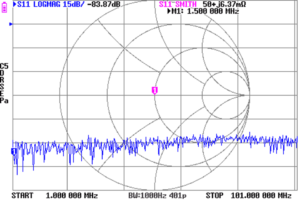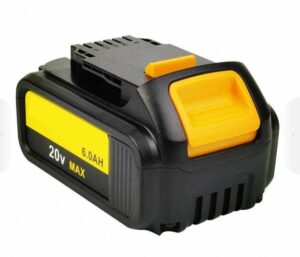A recent series of articles discussed the question of how accurate does a calibration LOAD need to be.
Following on from that I requested a change to allow the actual resistance of LOAD to be used
These tests are not conducted in a temperature stable laboratory, so allow some latitude in results.
The NanoVNA-H running NanoVNA-D firmware v1.2.35 was SOL calibrated, but the calibration kit had a LOAD that measured 51.273Ω at DC using a high accuracy ohmmeter.
Above is an |s11| sweep after calibration. Measurement is limited by the instrument noise floor, about -80dB @ 1MHz. This says nothing about the load as it is based on a flawed calibration, but it shows us the noise floor. For reasonable accuracy, we might say here that we can measure |s11| down to about -70dB… subject to an accurate calibration LOAD. Continue reading Dislord’s NanoVNA-D firmware v1.2.35 includes a facility to apply a correction based on the DC resistance of the LOAD





